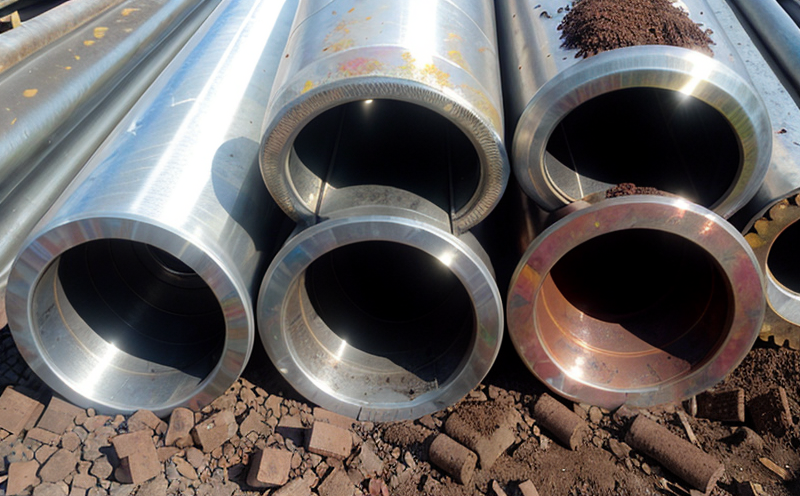ASTM F963 Heavy Metal Safety in Toy Jewelry
The ASTM F963-17 Standard Consumer Safety Specification for Toy Safety is a critical document that sets the standards for toy safety, including heavy metal content in toy jewelry. Compliance with this standard ensures toys are safe for children and meets regulatory requirements worldwide.
The ASTM F963 standard specifically addresses the use of hazardous substances in toys and child care articles. Section 8.12 focuses on heavy metals such as lead, cadmium, chromium, mercury, and others that can be harmful to children if ingested or absorbed through skin contact. The standard aims to protect children from exposure to these elements by establishing limits for their concentration levels.
The testing of toy jewelry under ASTM F963 involves several key steps:
- Sample preparation: Ensuring the sample is representative and free from external contamination.
- Testing methods: Utilizing validated analytical techniques such as Inductively Coupled Plasma Mass Spectrometry (ICP-MS) or Atomic Absorption Spectroscopy (AAS).
- Data interpretation: Carefully analyzing the results to determine compliance with specified limits.
The testing process is designed to be rigorous, ensuring that any toy intended for children complies not only with ASTM F963 but also meets broader safety regulations and consumer expectations. This service plays a crucial role in safeguarding public health by preventing potentially harmful substances from entering the market.
| Applied Standards | Details |
|---|---|
| ASTM F963-17 | Standard Consumer Safety Specification for Toy Safety, Section 8.12 Heavy Metals in Toys. |
| EN 71-4:2019 | Plastic Materials and Articles Intended to be Placed in Contact with Food or Mouth. |
| IEC 62196:2013 | Safety of toys - Particular requirements for toy jewelry. |
The service provided includes a comprehensive assessment using state-of-the-art equipment and methodologies, ensuring accurate and reliable results. Our team of experts ensures that all samples are tested under controlled conditions to ensure the highest level of accuracy and consistency.
| Use Cases and Application Examples | Description |
|---|---|
| Testing for Lead Content in Toy Jewelry | Ensuring that toy jewelry does not exceed the permissible limit of lead, which is 90 ppm as specified by ASTM F963-17. |
| Monitoring Cadmium Levels | Cadmium levels should be below 125 ppm to comply with the standard. This testing helps manufacturers ensure their products are safe for children. |
In addition to these specific tests, our service also includes a broader evaluation of toy safety, which may involve other ASTM standards or regulations depending on the client's needs and market requirements. Our goal is to provide a full-service solution that not only meets but exceeds expectations in terms of product safety.
Applied Standards
The following are the key applied standards for testing heavy metal content in toy jewelry according to ASTM F963:
| Standard | Description |
|---|---|
| ASTM F963-17 | This standard specifies the consumer safety specifications for toys and child care articles, including limits on heavy metals. |
| EN 71-4:2019 | This European standard sets out requirements for plastic materials and articles intended to be placed in contact with food or mouth. It includes specific limits for lead, cadmium, and other elements. |
| IEC 62196:2013 | This international standard provides particular requirements for toy jewelry, including safety considerations related to heavy metals. |
The application of these standards ensures that the testing process is both thorough and consistent with global best practices. Our laboratory adheres strictly to these guidelines to provide clients with accurate and reliable test results.
Benefits
Enhanced Consumer Trust: By ensuring compliance with ASTM F963, companies demonstrate their commitment to child safety, enhancing consumer trust in their products.
Avoidance of Legal Issues: Non-compliance can lead to significant legal and financial consequences. Our testing ensures that products meet all necessary regulatory requirements, minimizing the risk of legal action.
Competitive Advantage: Demonstrating compliance with global standards such as ASTM F963 can provide a competitive edge in the marketplace, particularly for international markets.
Brand Reputation: A strong reputation for product safety is crucial in today's market. Compliance testing helps maintain and build this reputation.
In addition to these direct benefits, our service also supports companies in meeting broader regulatory requirements such as CPSC regulations in the United States and other national standards.
Use Cases and Application Examples
Testing for Lead Content: Ensuring that toy jewelry does not exceed the permissible limit of lead, which is 90 ppm as specified by ASTM F963-17.
Monitoring Cadmium Levels: Cadmium levels should be below 125 ppm to comply with the standard. This testing helps manufacturers ensure their products are safe for children.
Compliance Monitoring: Regular testing can help companies monitor compliance over time, ensuring ongoing adherence to safety standards.
Product Development: Testing during product development ensures that new toy designs meet all necessary safety requirements before going to market.
| Use Cases and Application Examples | Description |
|---|---|
| Testing for Lead Content in Toy Jewelry | Ensuring that toy jewelry does not exceed the permissible limit of lead, which is 90 ppm as specified by ASTM F963-17. |
| Monitoring Cadmium Levels | Cadmium levels should be below 125 ppm to comply with the standard. This testing helps manufacturers ensure their products are safe for children. |
We offer a range of services tailored to meet the specific needs of our clients, whether they are conducting routine compliance checks or developing new products that must meet stringent safety standards.





